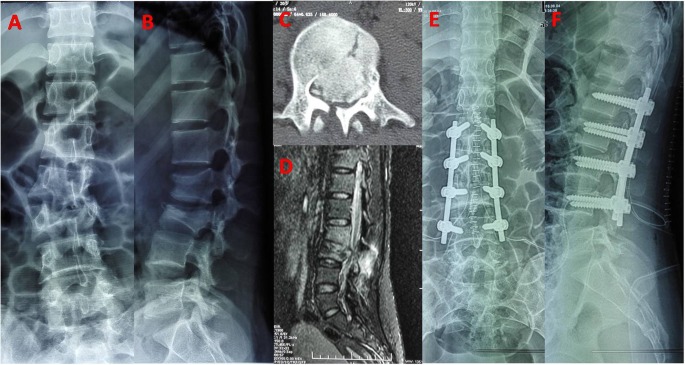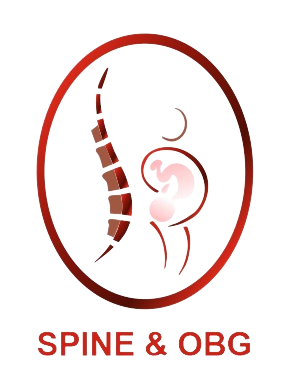
Thoracolumbar Fracture Stablilization
Thoracolumbar Fracture Stablilization
Thoracolumbar fracture stabilization is a surgical procedure aimed at stabilizing and realigning fractured vertebrae in the thoracic and lumbar regions of the spine.
It involves the use of various techniques such as spinal instrumentation (e.g., rods, screws, plates) and bone grafting to restore spinal stability, correct deformities, and facilitate healing.
This procedure helps prevent further injury to the spinal cord or nerves, alleviate pain, and promote functional recovery. Thoracolumbar fracture stabilization is typically indicated for traumatic fractures resulting from accidents, falls, or other high-impact injuries.
Common reasons for thoracolumbar fracture stabilization include traumatic injuries from accidents or falls, resulting in spinal instability and neurological compromise.
This procedure is also indicated for managing severe pain and preventing further damage or complications like spinal cord injury. By stabilizing fractured vertebrae with instrumentation and bone grafting, the surgery aims to restore spinal alignment, function, and mobility.
Additionally, stabilization facilitates proper healing and reduces the risk of long-term disability, promoting optimal recovery and quality of life for the patient.
Our Spine Surgeon Dr. Arjun R H H will assess your condition thoroughly before surgery to determine the most suitable course of action.
Minimally invasive spine surgery is typically performed using specialized instruments and techniques that allow the surgeon to access the spine through small incisions.
These procedures often utilize fluoroscopy or other imaging techniques to guide the surgeon’s instruments to the precise location. By minimizing damage to surrounding tissues, muscles, and nerves, this approach aims to reduce pain, scarring, and recovery time for the patient.
The recovery time for a Thoracolumbar Fracture Stablilization surgery can vary depending on the individual and the specific details of the surgery. Generally, after the procedure, patients are often able to walk on the same day or the next day. Many patients are discharged within a day or two following the surgery, as it’s often performed as an outpatient procedure.
However, it’s crucial to note that the exact recovery timeline can vary based on factors such as the patient’s overall health, the extent of the disc herniation, and any complications that may arise during or after surgery. Some patients may experience relief from symptoms almost immediately after surgery, while others may require a few weeks to fully recover.
Overall, many patients experience significant improvement shortly after a Thoracolumbar Fracture Stablilization surgery, it’s essential to understand that individual recovery experiences can vary, and Dr Arjun R H H & team will guide and support throughout the recovery process.
The risks of Thoracolumbar Fracture Stabilization include infection, bleeding, nerve damage, hardware failure, nonunion or malunion of fractured vertebrae, adjacent segment degeneration, anesthesia complications, and rare issues like spinal fluid leaks or dural tears.
The benefits of Thoracolumbar Fracture Stabilization include restoring spinal stability, alleviating pain, and improving spinal alignment.
This procedure prevents further damage and promotes proper healing, reducing the risk of neurological complications like spinal cord compression.
Additionally, it facilitates efficient rehabilitation, enabling patients to regain strength and mobility. By reducing long-term complications and promoting spinal health, stabilization enhances overall quality of life for patients.
Dr. Arjun R. H. H typically evaluates the necessity for Thoracolumbar Fracture Stabilization using a combination of methods, including physical examination, imaging tests such as MRI, and a review of the patient’s medical history.
During the physical examination, Dr. Arjun R H H assesses strength, sensation, reflexes, and symptoms like pain and mobility limitations in the affected area.
Imaging tests, particularly MRI, help pinpoint the location and severity of spinal issues like disc degeneration or instability, and whether they are causing nerve compression. Based on these evaluations, Dr. Arjun H H determines if Thoracolumbar Fracture Stabilization is the suitable treatment option for the patient’s condition.
The typical duration of a Thoracolumbar Fracture Stabilization surgery can vary depending on factors such as the complexity of the fracture, the specific surgical approach, and any additional procedures needed.
However, on average, the surgery usually takes around 3 to 5 hours to complete. This timeframe includes pre-operative preparation, anesthesia induction, surgical procedures, and post-operative care such as wound closure and recovery room monitoring.
Dr Arjun R H H strive to perform the procedure efficiently while ensuring thorough stabilization and optimal outcomes for the patient.
Following Thoracolumbar Fracture Stabilization surgery, the duration of hospital stay varies, typically ranging from a few days to a week. Many patients are able to go home within a few days post-surgery, once they have recovered from anesthesia and are stable.
However, some may require a longer hospital stay for closer monitoring or if there are concerns about their recovery. Factors influencing the duration of hospital stay include the patient’s overall health, the complexity of the fracture, and the extent of the stabilization procedure.
Dr Arjun R H H and medical team will determine the appropriate length of stay based on individual circumstances and recovery progress.
After Thoracolumbar Fracture Stabilization surgery, maintaining a healthy spine involves a combination of medications, exercises, and lifestyle modifications.
For a safe and effective recovery, Dr Arjun R H H will prescribes medications to manage pain and inflammation during the recovery period.
Additionally, Doctor will recommend specific exercises to strengthen the muscles supporting the spine and improve flexibility. Depending on the patient’s overall condition and specific surgical outcome, the doctor may provide personalized recommendations . For more information and guidance, it’s advisable to consult Spine Surgeon Dr. Arjun R H H.
Views: 14
